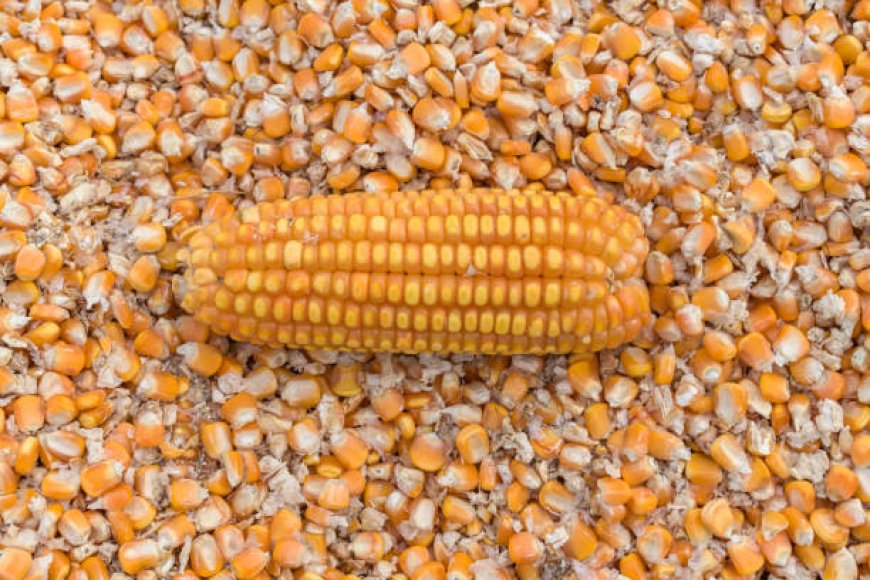Top Rabi Crops in India for Profitable Winter Farming
The success of rabi crops depends largely on temperature, soil moisture retained after monsoon rains, irrigation availability, and the use of high-quality seeds.

India's agricultural system is structured around two primary cropping seasonsKharif and Rabi. While Kharif crops are sown during the monsoon season, rabi crops are grown during the winter months, making them essential for the country's food security and economy. Rabi farming typically begins with the onset of winter in October-November and harvesting occurs during spring, from March to April.
The success of rabi crops depends largely on temperature, soil moisture retained after monsoon rains, irrigation availability, and the use of high-quality seeds. Since these crops are less dependent on rainfall and more reliant on irrigation and temperature, proper planning and timely execution are vital for achieving profitable yields.
What Are Rabi Crops?
Rabi crops are also referred to as winter crops because they are cultivated after the monsoon has withdrawn. These crops thrive in cooler climates and are often dependent on artificial irrigation rather than direct rainfall. Unlike Kharif crops, which need warm and humid weather, rabi crops require cool growing conditions and dry environments during harvesting.
Farmers usually prepare their fields right after the Kharif harvest and sow rabi crops between October and December, depending on the region and crop type.
Importance of Rabi Crops in Indian Agriculture
Rabi crops play a crucial role in Indias food supply, rural income, and agro-based industries. These crops are often staple food sources like wheat and pulses or commercially important like mustard and barley. Because rabi crops are less vulnerable to unpredictable rainfall, they often result in more stable yields and better market prices, offering greater profitability to farmers.
Additionally, rabi farming contributes significantly to the agricultural GDP of India and supports export markets, especially for grains and oilseeds.
Top Rabi Crops Cultivated in India
Here are some of the most widely cultivated and economically significant rabi crops in India:
1. Wheat
Wheat is the most important rabi crop in India and a staple in Indian households, especially in the northern states. It contributes a large portion to the national food grain output.
-
Major Producing States: Uttar Pradesh, Punjab, Haryana, Madhya Pradesh, Rajasthan
-
Sowing Period: OctoberNovember
-
Harvesting Period: MarchApril
-
Ideal Conditions: Loamy soil, temperatures between 10C to 25C
Wheat is highly sensitive to temperature changes, especially during the grain formation stage, and requires adequate irrigation for optimal yield.
2. Barley
Barley is a hardy rabi crop that requires minimal water and can grow well in dry areas. It is used for food, fodder, and brewing.
-
Major Producing States: Rajasthan, Uttar Pradesh, Madhya Pradesh, Punjab, Haryana
-
Sowing Period: OctoberNovember
-
Harvesting Period: FebruaryApril
-
Ideal Conditions: Sandy loam soil, moderate irrigation, cool weather
Barley farming is cost-effective and suited for regions with limited irrigation facilities.
3. Mustard (Rapeseed)
Mustard is a valuable oilseed rabi crop grown for its oil and high protein-rich seedcake used in animal feed.
-
Major Producing States: Rajasthan, Uttar Pradesh, Madhya Pradesh, Haryana, Gujarat
-
Sowing Period: OctoberNovember
-
Harvesting Period: FebruaryMarch
-
Ideal Conditions: Fertile loamy soil with good drainage, cool and dry climate
India is one of the largest producers of mustard seeds globally, and demand continues to rise due to its nutritional and commercial value.
4. Gram (Chana)
Gram, or chickpea, is a widely consumed pulse crop rich in protein and fiber, making it essential in Indian diets.
-
Major Producing States: Madhya Pradesh, Rajasthan, Maharashtra, Uttar Pradesh, Andhra Pradesh
-
Sowing Period: OctoberNovember
-
Harvesting Period: MarchApril
-
Ideal Conditions: Well-drained loamy soil, moderate irrigation, and cool weather
It improves soil fertility by fixing nitrogen and is often grown in rotation with cereals.
5. Peas (Matar)
Green peas are not only used for household cooking but also in the frozen food and snack industry.
-
Major Producing States: Uttar Pradesh, Madhya Pradesh, Punjab, Haryana
-
Sowing Period: OctoberNovember
-
Harvesting Period: FebruaryMarch
-
Ideal Conditions: Cool climate, fertile soil, and good moisture levels
Peas offer a quick return on investment and have growing demand in both fresh and processed food markets.
6. Lentils (Masoor)
Lentils are another important pulse crop grown during the rabi season. They are consumed widely for their protein content.
-
Major Producing States: Madhya Pradesh, Uttar Pradesh, Bihar, West Bengal
-
Sowing Period: OctoberNovember
-
Harvesting Period: MarchApril
-
Ideal Conditions: Dry, cool weather, loamy soil with low moisture
Masoor farming is low-cost and often done without the use of fertilizers, making it ideal for sustainable and organic farming.
Best Practices for Rabi Crop Cultivation
To ensure a successful harvest, farmers should focus on:
-
Timely Sowing: Late sowing can reduce yield drastically, especially for wheat and pulses.
-
Proper Irrigation: Since these crops grow in winter, supplemental irrigation is often necessary.
-
Soil Testing and Fertilization: Balanced nutrient application based on soil health ensures healthy plant growth.
-
Weed and Pest Control: Regular monitoring and integrated pest management are essential.
-
Use of Certified Seeds: High-quality seeds offer better germination and disease resistance.
These practices, when combined with weather monitoring and extension support, can significantly enhance productivity and profitability.
Challenges Faced in Rabi Farming
Despite their benefits, rabi crops face certain challenges:
-
Water Scarcity: Lack of irrigation infrastructure in some regions hampers rabi sowing.
-
Climate Variability: Unseasonal rains or sudden temperature rises can affect yield.
-
Soil Degradation: Intensive farming without rotation or proper nutrient management reduces soil fertility.
-
Market Fluctuations: Price volatility in pulses and oilseeds can impact farmer income.
Addressing these challenges requires policy support, investment in irrigation, and farmer awareness programs.
Conclusion
Rabi crops are a cornerstone of India's agricultural system, offering a source of income, nutrition, and employment during the winter season. With advancements in farming techniques, seed technology, and irrigation infrastructure, the scope for rabi farming is expanding.
By choosing the right rabi crops for their region, practicing timely sowing, and employing modern agronomic practices, farmers can ensure profitable winter farming. As the demand for food and agricultural products grows, rabi season farming will continue to play a vital role in strengthening India's food security and rural economy.































